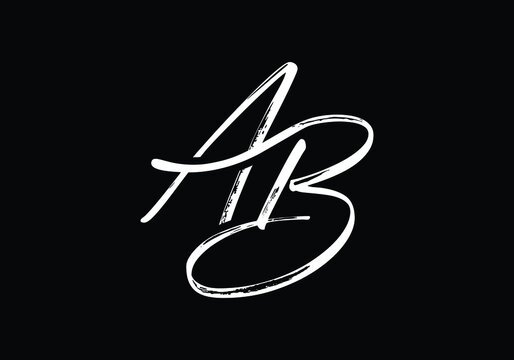Symposium Scribbles: Unraveling Diagnostics Secrets at The Crick
What: Diagnostics Development Symposium
When: 19 Jan 2024
Where: The Francis Crick Institute in London
Who: Translation experts, diagnostics experts, industry leaders, Crick innovators
Aim: The Crick’s diagnostics symposium was kindly organized by Dr. Ranmali Nawaratne with the aim to bring together Crick innovators with industry experts to decode the development of diagnostics.
Key Lessons: extracted from meeting notes
Innovation Beyond Tech: Success may lie in improving existing systems and designs, not just in developing new technology.
Supply Chain Mastery: Know where your reagents come from, ensure you have a steady supply, and check for legal freedom to operate.
User Adoption: Understand the context in which the user operates. Your tech must be not only functional but also desirable and easy to integrate into existing workflows.
Focus for Platform Tech: If you’re developing a platform technology, pinpoint and prioritise key applications before seeking funding.
Sustainability Matters: Businesses may soon have to comply with sustainability mandates, which will influence investor decisions.
Clinical Translation is Tough: A high failure rate for biomarkers reaching clinical use emphasizes the need for broad evidence collection, beyond just clinical data.
Partnerships with Experts: Entities like LifeArc and NIHR London In Vitro Diagnostics Co-operative can provide essential lab services and clinical development expertise to move from publishing to clinical validation.
Structured Funding: UKRI-MRC-DPFS grants are laid out like a translation grant with clear criteria and timelines but are aimed for established projects rather than new lab setups.
Data-Driven Partnerships: Collaborating on technology with the top dogs in industry requires extensive data to navigate development and validation challenges successfully.
ChatGPT’s witty version of my raw notes:
In the bustling heart of London's biotech scene, the recent Diagnostics Symposium at the Crick Institute sent a clear message to aspiring entrepreneurs: innovation in diagnostics is not just about new tech, but smarter systems. John Pritchard, a maestro in the field, punctuated the event with insights that echoed in the halls like a clarion call for ingenuity. Forget the Silicon Valley rhetoric for a moment; success may well lie in the mastery of supply chains, from the reagents you source to the mundane yet crucial batch-to-batch variability.
For those with a product in the pipeline, Pritchard threw down the gauntlet, challenging attendees to ponder deeply: can you source enough reagents? Is your operation legally clear? Will users champion your product, or will it be another unwelcome step in their routine? And for those daydreaming about platform technologies, focus is your true north—identify your killer applications to woo the funding gods.
The London In Vitro Diagnostic Co-Operative, backed by the hefty acronyms of NIHR and ICL, delivered a sobering statistic: a staggering 97% of cancer biomarkers are relegated to the lab bench, failing to make the clinical cut. The lesson? Evidence is multifaceted. Aspiring moguls must venture beyond clinical trials, embracing everything from stakeholder management to economic analysis.
Meanwhile, LifeArc Diagnostics offered a beacon of hope with its ISO13485 certified lab services. After the fanfare of publishing, they're the ones rolling up their sleeves to replicate, refine, and validate—essentially, the due diligence investors salivate over, but with a collaborative twist courtesy of the Crick.
On the funding front, the UKRI-MRC-DPFS grant shined a spotlight on its structured approach, resembling a translation grant with its clear go/no-go criteria and well-defined timelines. However, new PIs be warned: this isn't your lab's setup fund—it's all about the project.
Finally, Iain D Miller of Presymptom Health capped the event, underscoring that technology partnering isn't for the faint-hearted. It demands data, heaps of it, to navigate the maze of lessons and hurdles.
To add to this treasure trove of wisdom, Tom Leonard from Kilburn & Strode chimed in with the kind of legal acumen that turns inventive sparks into fireproof assets. “Guard your innovations like a dragon hoards gold,” he quipped, reminding us that premature disclosure is the Achilles' heel of patent protection. Leonard’s mantra for success: consider your timeline meticulously, secure funding well before the 30-month mark, and strategize international filings with a global vision in mind. After all, the path from 'eureka' to 'economy' is paved with patented secrets.
Amidst the symposium's wealth of knowledge, we were tantalized by whispers of groundbreaking innovations brewing at the Crick (including a rather clever one of mine) and Owkin Diagnostics. But in the spirit of suspense and a bit of entrepreneurial mystique, those details are zipped up tighter than a hipster's skinny jeans—strictly confidential, of course!
So there you have it, straight from the frontline of diagnostic innovation and, cheekily enough, drafted with a helping hand from yours truly, ChatGPT, based on personal notes from an attendee with an entrepreneurial gleam in their eye. Who says AI can't be at the cutting edge of scientific symposiums?
Disclaimers:
* My personal notes should be largely correct, though I'm only human!
** Beware, ChatGPT fabricates quotes.. clearly not human.
Join the dialogue—reflect, share your tales from the trenches, and by all means correct me if you spot any erroneous information.

